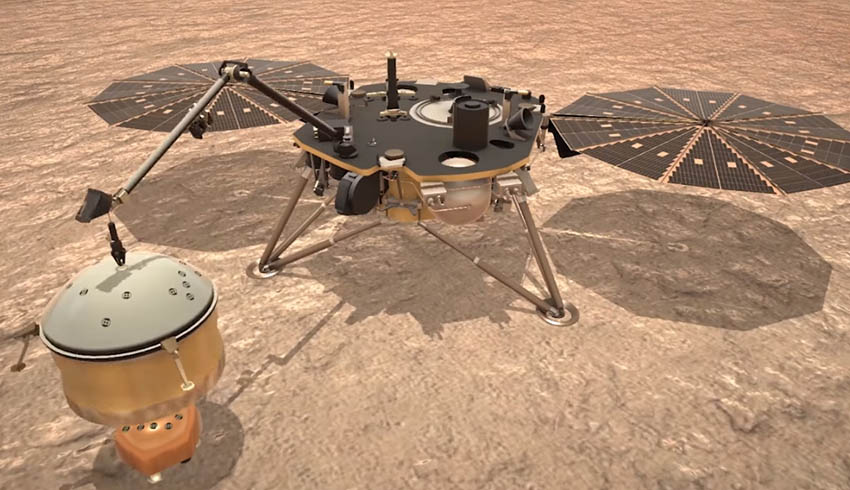InSight touched down just before 3pm ET in the Elysium Planitia area of Mars, completing a 458 million-kilometre, 205-day journey through space. InSight is the first mission dedicated to understanding the internal structure of Mars. The mission is expected to last at least two Earth years, or one Martian year. Originally named the Geophysical Monitoring Station (GEMS), and also known as Discovery 12, the InSight mission is led by NASA’s Jet Propulsion Laboratory (JPL) with Bruce Banerdt as principal investigator.
"Today, we successfully landed on Mars for the eighth time in human history. InSight will study the interior of Mars, and will teach us valuable science as we prepare to send astronauts to the moon and later to Mars," said NASA administrator Jim Bridenstine.
The landing signal was relayed to JPL in Pasadena, California by experimental Mars Cube One (MarCO) CubeSats, which launched on the same rocket as InSight and followed the lander to Mars.
"The InSight lander is a remarkable spacecraft. Through the entire entry, descent and landing it performed flawlessly," said InSight program manager and director of deep space exploration at Lockheed Martin Space, Stu Spath.
"NASA's JPL, which has been a pioneer in Mars exploration for decades, partners with both academia and private industry to bring the best expertise and innovation forward to make important exploration missions like InSight a success."
InSight will operate on the surface of the Red Planet for one Martian year, plus 40 Martian days, until 24 November 2020.
"Every Mars landing is daunting, but now with InSight safely on the surface we get to do a unique kind of science on Mars," said JPL director Michael Watkins. "The experimental MarCO CubeSats have also opened a new door to smaller planetary spacecraft. The success of these two unique missions is a tribute to the hundreds of talented engineers and scientists who put their genius and labour into making this a great day."
Lockheed Martin is the prime contractor responsible for the entire spacecraft system – cruise stage, aeroshell and the lander itself. Spacecraft operations were performed by engineers at Lockheed Martin Space's Mission Support Area in Littleton, Colorado.
The primary goals of the InSight mission are to help gain an understanding of how the terrestrial planets formed and evolved by studying the interior of Mars, and to determine current seismic and impact activity on Mars.
The specific objectives of the mission are to determine the thickness and structure of Mars’ crust, the composition and structure of its mantle and the size, composition and physical state of its core. Other key objectives are to characterise the thermal state of the planet’s interior, to measure seismic activity and the rate of meteorite impacts on the surface.

